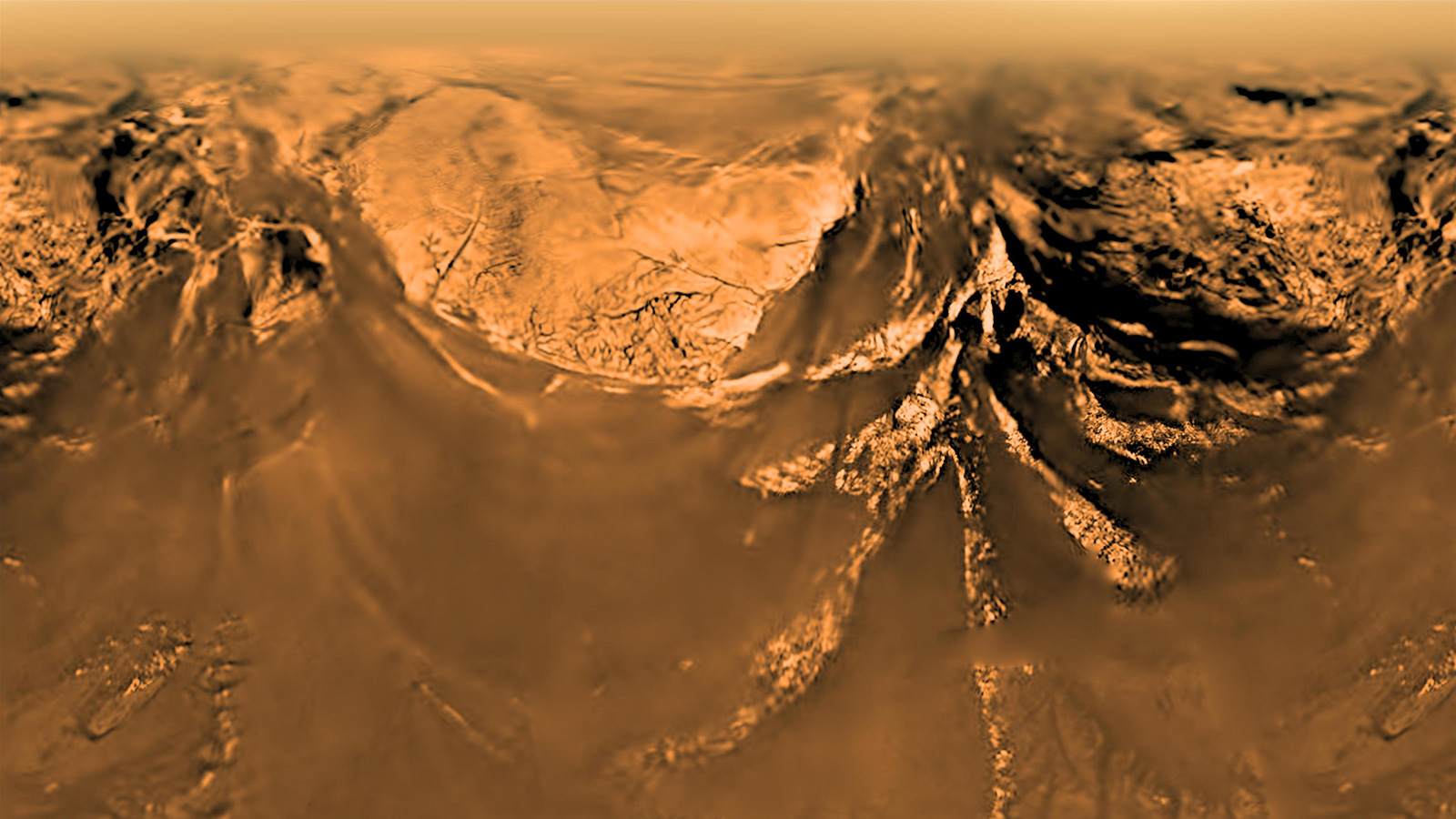
Twelve years ago today, one of the most incredible space missions ever was accomplished: the first landing of a probe on an alien moon. And this wasn’t just any moon, but Titan, largest moon of Saturn and one of the most fascinating worlds in the Solar System. Although much colder than Earth, Titan mimics some of the processes found here such as its hydrological cycle, but with liquid methane/ethane instead of water. Titan had been observed extensively by telescopes and from Saturnian orbit, but this was the first time the surface could be seen up close.
The Huygens lander, part of the Cassini mission to Saturn, was the first probe to ever attempt a landing on this alien world and it succeeded, in spades. Although not designed to last very long in the harsh environment, it sent back a wealth of information in the limited time it had.
Huygens was a project of the European Space Agency, which accompanied NASA’s Cassini spacecraft to Saturn. On Dec. 24, 2004, Huygens separated from the Cassini spacecraft and began its journey to Titan, which would take another 20 days.
On Jan. 14, 2005, it descended through Titan’s thick atmosphere, hanging beneath large parachutes. The probe measured the complex chemistry of the atmosphere as well as winds. Thousands of images were taken, showing the rugged highlands near its landing spot as well as drainage channels. The region looked very much like a coastline on Earth, with mountains and rivers; Huygens landed in what is thought to be an old lakebed or floodplain. But like other still-liquid lakes and seas elsewhere, that lake would have been composed of liquid methane/ethane, not water. On Titan’s surface, water ice is as hard as rock. Indeed, Huygens saw rounded boulders on the surface composed of water ice instead of rock. There was even some residual moisture still in the ground.
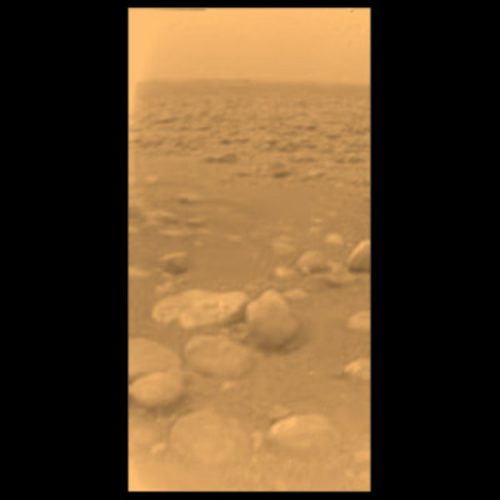
After only about 72 minutes, Huygens’ “mothership,” Cassini, dropped below the horizons, cutting off communications. But before then, the probe had already collected a ton of data and images from the surface.
To help celebrate this anniversary, some of the Cassini team members and other NASA leaders shared their thoughts about the mission:
“The Huygens descent and landing represented a major breakthrough in our exploration of Titan as well as the first soft landing on an outer-planet moon. It completely changed our understanding of this haze-covered ocean world,”
said Linda Spilker, Cassini project scientist at NASA’s Jet Propulsion Laboratory, Pasadena, Calif.
“The Huygens images were everything our images from orbit were not. Instead of hazy, sinuous features that we could only guess were streams and drainage channels, here was incontrovertible evidence that at some point in Titan’s history – and perhaps even now – there were flowing liquid hydrocarbons on the surface. Huygens’ images became a Rosetta stone for helping us interpret our subsequent findings on Titan,” said Carolyn Porco, Cassini imaging team lead at Space Science Institute, Boulder, Colo.
“Cassini and Huygens have shown us that Titan is an amazing world with a landscape that mimics Earth in many ways. During its descent, the Huygens probe captured views that demonstrated an entirely new dimension to that comparison and highlights that there is so much more we have yet to discover. For me, Huygens has emphasized why it is so important that we continue to explore Titan,”
said Alex Hayes, a Cassini scientist at Cornell University, Ithaca, N.Y.
“Twelve years ago, a small probe touched down on an orangish, alien world in the outer solar system, marking humankind’s most distant landing to date. Studying Titan helps us tease out the potential of habitability of this tiny world and better understand the chemistry of the early Earth,”
said Jim Green, director of planetary science at NASA Headquarters, Washington.
As revealed by both Huygens and Cassini, Titan is one of the most enigmatic worlds in the Solar System, with rain, rivers, lakes, and seas of liquid methane/ethane, a thick nitrogen atmosphere with organic haze and clouds, vast dunes of organic material, and likely a subsurface ocean of water. Titan’s surface is literally covered in organic materials, thought to be similar to what existed on the early Earth.
Although extremely cold on Titan, some scientists believe that some form of primitive life could possibly exist there, in its lakes and seas or in the subsurface ocean. If so, it would probably be methane-based and different from anything seen on Earth. At the very least, Titan’s environment is thought to be quite similar to that of the early Earth, just before life started here. In many ways, Titan seems more like a planet than a moon, which made it such an enticing target for exploration.
While Titan has been a primary focus, Cassini has been busy exploring the entire Saturnian system since 2004. From the dozens of moons to the majestic rings of Saturn itself, there has been no lack of things to study; the Saturnian system is a very diverse collection of worlds and could be thought of as a miniature solar system in itself.
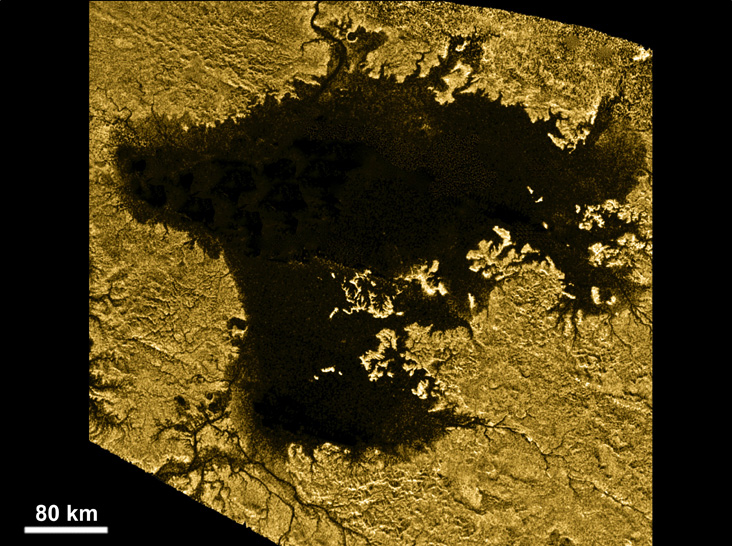
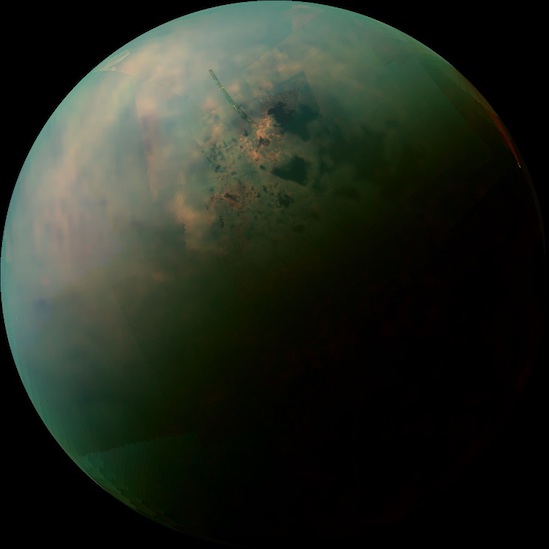
The moon Enceladus may be very small, but it has a subsurface ocean of water below its ice crust which can come up to the surface in the form of massive geysers through large cracks in the surface. Cassini has been able to sample these plumes directly, finding water vapor, ice particles, salts, and a variety of organic molecules. With evidence of hydrothermal activity on its ocean floor, Enceladus is now thought to be one of the best places to search for evidence of alien life. Cassini itself can’t determine whether life exists or not, that will require a follow-up mission. Concepts for such a mission are now being planned and designed.
Cassini recently began a series of Ring-Grazing Orbits, which will take it within the rings and closer to the planet itself as it prepares to end its mission this coming fall.
“This is it, the beginning of the end of our historic exploration of Saturn. Let these images – and those to come – remind you that we’ve lived a bold and daring adventure around the Solar System’s most magnificent planet,” said Carolyn Porco, Cassini imaging team lead at Space Science Institute in Boulder, Colo.
This phase of the mission began last Nov. 30, and will consist of 20 week-long orbits which pass very close to the outer edges of Saturn’s rings. In each pass, the spacecraft will also pass over the northern hemisphere just before “grazing” the rings. Subsequent passes will bring Cassini even closer to the edges of the rings, providing some of the closest images of the rings and the tiny moons which also orbit in that region.
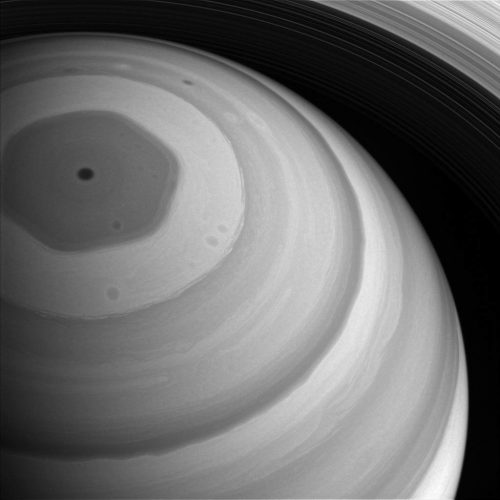
“We’re calling this phase of the mission Cassini’s Ring-Grazing Orbits, because we’ll be skimming past the outer edge of the rings,” said Linda Spilker, Cassini project scientist at NASA’s Jet Propulsion Laboratory in Pasadena, Calif. “In addition, we have two instruments that can sample particles and gases as we cross the ringplane, so in a sense Cassini is also ‘grazing’ on the rings.”
During the Grand Finale phase, Cassini will plunge through the rings 22 times, through the 1,500-mile-wide (2,400-kilometer) gap between Saturn and its innermost ring, starting April 26, 2017. On Sept. 15, 2017, Cassini will plunge into Saturn’s atmosphere, on purpose, after it runs out of fuel. This fiery ending was decided upon in order to prevent the spacecraft from possibly colliding with any of the moons, in particular Enceladus or Cassini, where contamination could occur from possible microbes still alive onboard.
Although there are not yet any follow-up Cassini-style missions planned yet, scientists are working on new missions to return to Titan and Enceladus specifically. One such mission would study the potential habitability of Enceladus’ ocean and search for possible evidence of life itself. A mission to Titan would aim to land a boat-like probe in one of its methane/ethane seas; an even more ambitious future mission could be a submarine-type probe.
The proposed submarine, currently called the Titan Submarine Phase I Conceptual Design, would explore one of the moon’s exotic methane/ethane seas. It was created by NASA Glenn’s COMPASS Team along with other researchers from Applied Research Lab. Appearance-wise, it resembles some older submarine models, but the technology involved would be much more advanced, necessary for working in such a cold, dark environment. From a recent paper:
“The vehicle would observe – and perhaps ultimately exploit – tidal currents in the sea, which follow a cycle once per Titan day, or 16 Earth days. When surfaced, as well as communicating with Earth, the vehicle would use a mast-mounted camera to observe the sea state and shoreline landscape, and would record meteorological observations. Measurement of the trace organic components of the sea, which perhaps may exhibit prebiotic chemical evolution, will be an important objective, and a benthic sampler would acquire and analyze sediment from the seabed. These measurements, and seafloor morphology via sidescan sonar, may shed light on the historical cycles of filling and drying of Titan’s seas. Models suggest Titan’s active hydrological cycle may cause the north part of Kraken to be ‘fresher’ (more methane-rich) than the south, and the submarine’s long traverse will explore these composition variations.”
There are currently two proposed follow-up missions to return to Enceladus: The Enceladus Life Finder (ELF) would fly through the plumes and analyze them, like Cassini, but with more advanced instruments, and the MASPEX instrument would analyze gas coming from the vents. ELF would be capable of finding and identifying amino acids, the building blocks of life. The Enceladus Icy Jet Analyzer would focus on solid particles in the plumes. Drilling through the ice to the ocean below would require a much more ambitious future mission, but just analyzing the water vapor escaping to space through the surface cracks would tell scientists a lot about the conditions in the ocean and whether life could be, or is, there.
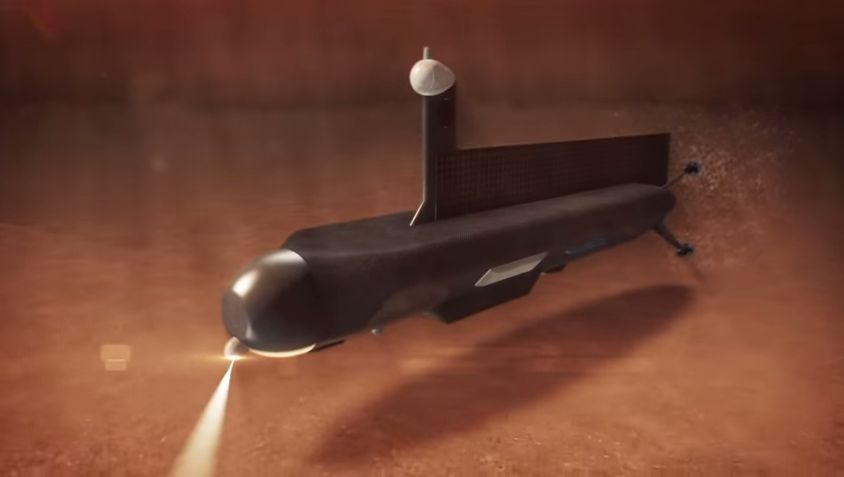
“The plume of Enceladus is waiting for us. It could be the place where we find out if life had a second genesis in our own Solar System,” said planetary scientist Jonathan Lunine at Cornell University, in a talk at the American Geophysical Union meeting. “We must go back.”
These missions are still a ways off, but the first steps have already been taken. The 2016 budget proposal from the U.S. House Appropriations Committee called for the creation of an “Ocean Worlds Exploration Program” which would fund new missions to Europa, Enceladus, and Titan. From the proposal:
“Many of NASA’s most exciting discoveries in recent years have been made during the robotic exploration of the outer planets. The Cassini mission has discovered vast oceans of liquid hydrocarbons on Saturn’s moon Titan and a submerged salt water sea on Saturn’s moon Enceladus. The Committee directs NASA to create an Ocean World Exploration Program whose primary goal is to discover extant life on another world using a mix of Discovery, New Frontiers and flagship class missions consistent with the recommendations of current and future Planetary Decadal surveys.”
Returning to Titan and Enceladus would be two of the most exciting missions ever in planetary exploration. These are not just moons, they are worlds, with an incredible diversity of geology in alien yet eerily Earth-like environments. Huygens gave us our first close-up look at Titan. What else will we find when we return?
More information about the Cassini/Huygens mission is available here.
Be sure to “LIKE” AmericaSpace on Facebook and follow us on Instagram & Twitter!




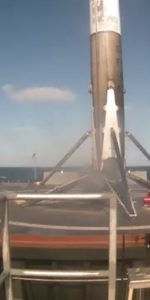
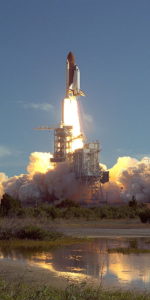
“We must go back.” (Jonathan Lunine) An emphatic YES!